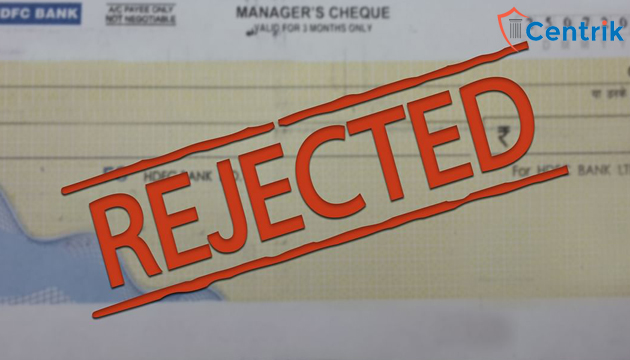
Status as on- 14/05/2023
A Cheque is called to have bounced or dishonoured when it is returned by the bank while still unpaid. It is also known as the Dishonour of the cheque. In today’s time, it is the most common financial offence and can be seen in everyday routine. A cheque bounce can result in multiple repercussions for the drawer as well as the drawee, for instance, heavy penalty from the bank, negative influence on the CIBIL score which would ultimately mean getting blacklisted to obtain any future loans, civil or criminal action against the drawer (accused) and many more. While sometimes there could be an innocent reason on the drawer’s end or banker’s end for the cheque to bounce but sometimes it could be tainted with malice. Anyhow, the drawee has the right to be timely paid and can thus demand the money owed to him by the drawer by taking legal recourse. Cheque bounce is a criminal offence stipulated under Section 138 of the Negotiable Instruments Act, 1881. The aggrieved party can file a criminal as well as a civil case against the accused who must have had a legal obligation to repay the amount.
Punishment:
If the accused is found guilty after the trial is over, then he can be punished with a monetary penalty which can be double the cheque amount or be punished with imprisonment which may extend to 2 years or even both.
Legal Process for Criminal Proceedings:
Issuing legal notice
The first and foremost step for the drawee is to issue a legal notice to the drawer of the cheque within 30 days of the return of the cheque. The notice has to clearly mention the return of the cheque and demand the payment of dues within 15 days of receiving the notice. Even though there is no particular format for such a notice, it mentions the purpose of the notice, and the amount due and informs the accused about the legal consequences of non-payment. The copy and proof of such notice must be preserved as evidence for further proceedings.
Filing a complaint
A complaint is only affected when the drawer has not replied to the demand notice within a period of 15 days from the delivery of the notice or has been delaying payment unnecessarily or has outrightly refused to pay the amount. A complaint is to be filed in the court which would have the jurisdiction over the dispute within the prescribed time limit of 30 days (from the date of receipt of the demand notice by the drawer).
It is pertinent to understand which court the drawee should approach in a cheque bounce case. The drawee can register the complaint in a court within whose local limits of jurisdiction any of the following incidents may have arisen:
-Place where the cheque was drawn
-Place where the cheque was presented
-Place where the bank returned the cheque
-Place where the notice of demand for payment was served by the drawee.
In lieu of this, a court fee ranging from Rs. 200-1000/- depending upon the amount of the cheque has to be paid for initiating the proceedings.
Issuing of summons
Once the complainant files a formal complaint against the drawer, the court issues a summons to the accused and other related parties in the transaction who have been involved in furnishing the irregular cheque. It is the formal communication of proceedings against them and legal order to be present in court whenever called.
In case the accused fails to appear in court on the desired date of hearing, the court has complete authority to issue a bailable warrant against him if requested by the complainant. And in case the accused again fails to appear before the court, the court in all probability will issue a non-bailable warrant of arrest against him.
Issue of Memo of Advocate (Vakalatnama) and initiation of proceedings
A Vakalatnama authorises an advocate to represent the complainant officially and it has to be formally filed with the court. It is presented on the first date of the hearing by the advocate. Then, all the documents are cross-checked by the Judicial Magistrate First Class and the limitation period is verified to ensure no default is there in instituting the proceedings.
Legal Process for Civil Proceedings:
The drawee has the option to file a civil suit against the cheque drawer to recover the due amount as well as the cost borne for litigation. A summary suit or the summary procedure can be invoked here, which is provided under Order XXXVII of Code of Civil Procedure, 1908 where the right to defend himself is not provided to the accused rather, the accused needs permission from the court to defend himself.
Disclaimer: The above article is based on the personal interpretation of the related orders and laws. The readers are expected to take expert opinions before relying upon the article. For more information, please contact us at ibc@centrik.in.




 join For Updates
join For Updates